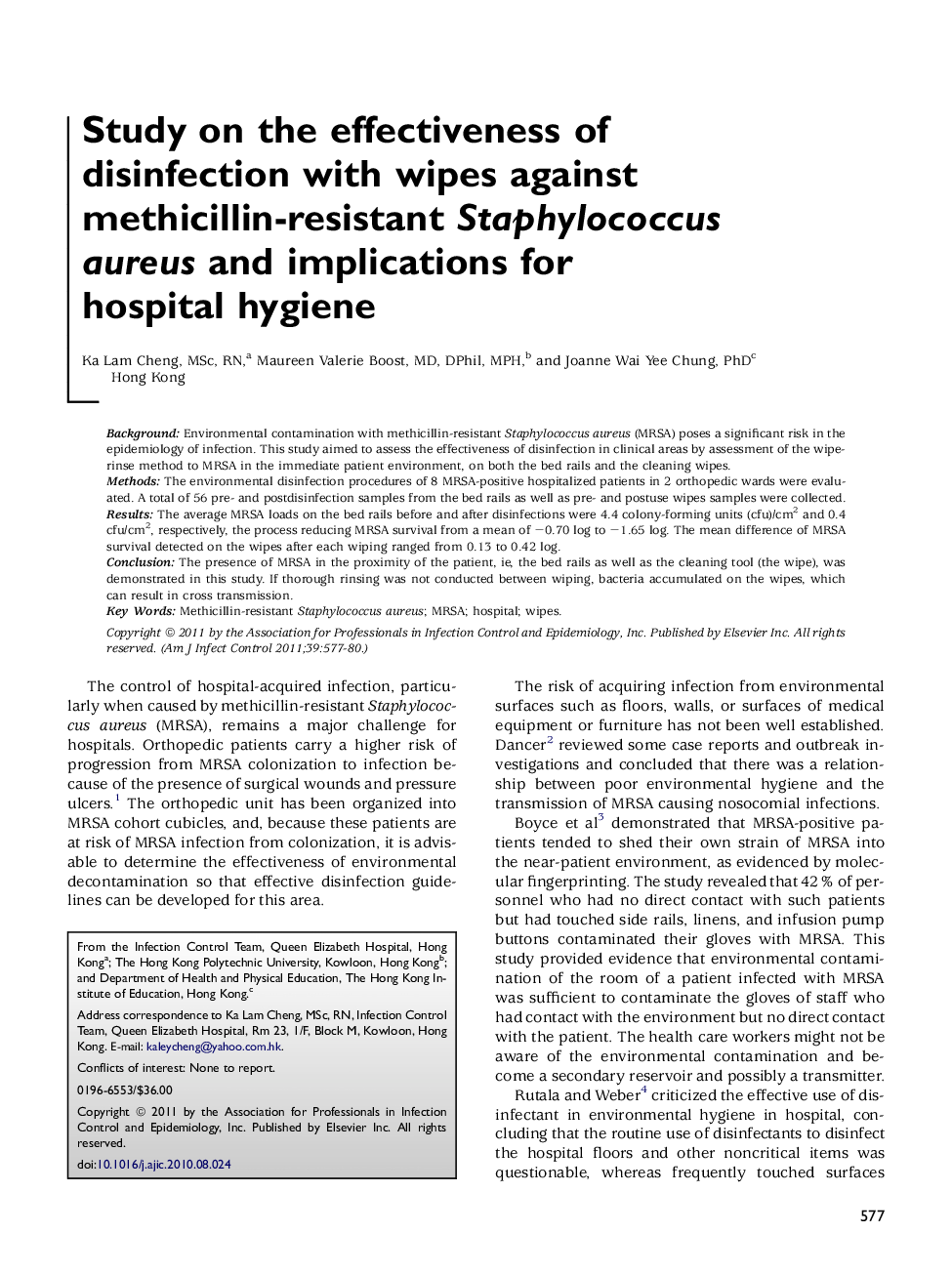| Article ID | Journal | Published Year | Pages | File Type |
|---|---|---|---|---|
| 2638787 | American Journal of Infection Control | 2011 | 4 Pages |
BackgroundEnvironmental contamination with methicillin-resistant Staphylococcus aureus (MRSA) poses a significant risk in the epidemiology of infection. This study aimed to assess the effectiveness of disinfection in clinical areas by assessment of the wipe-rinse method to MRSA in the immediate patient environment, on both the bed rails and the cleaning wipes.MethodsThe environmental disinfection procedures of 8 MRSA-positive hospitalized patients in 2 orthopedic wards were evaluated. A total of 56 pre- and postdisinfection samples from the bed rails as well as pre- and postuse wipes samples were collected.ResultsThe average MRSA loads on the bed rails before and after disinfections were 4.4 colony-forming units (cfu)/cm2 and 0.4 cfu/cm2, respectively, the process reducing MRSA survival from a mean of −0.70 log to −1.65 log. The mean difference of MRSA survival detected on the wipes after each wiping ranged from 0.13 to 0.42 log.ConclusionThe presence of MRSA in the proximity of the patient, ie, the bed rails as well as the cleaning tool (the wipe), was demonstrated in this study. If thorough rinsing was not conducted between wiping, bacteria accumulated on the wipes, which can result in cross transmission.
